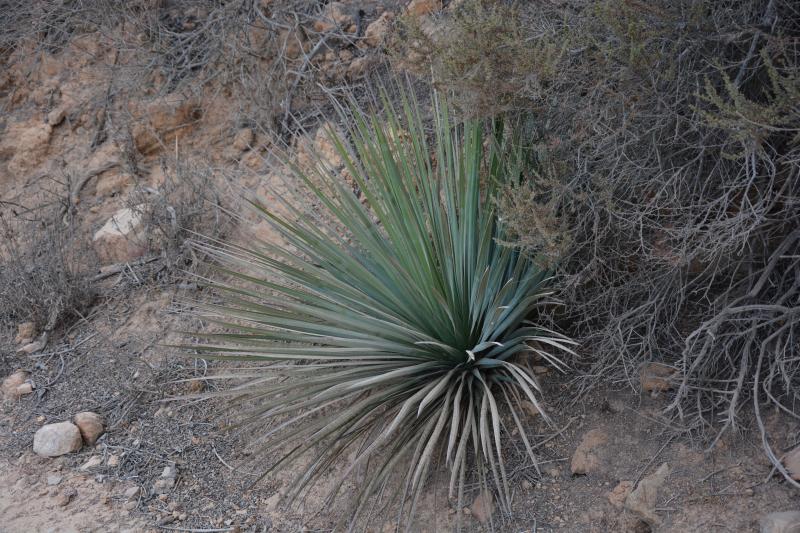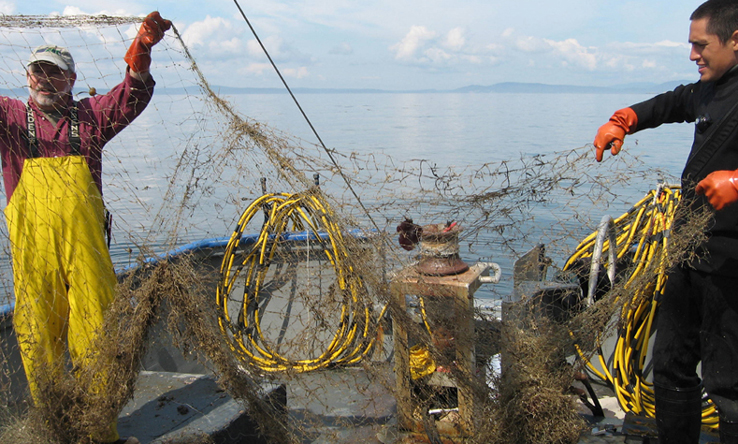 Source: obrag.org
Source: obrag.org
Remember in the old days before rope was made out of plastic? Back then (and sometimes even now), it was made from sisal. Sisal, Agave sisalana, is a type of agave. I saw it growing in Kenya during my visit. It’s still used there to make rope.
Here in San Diego, we don’t have sisal – but we do have plenty of agave. We’ve also got a few species of yucca, which are also in the Agave family (Agavaceae). So it’s no surprise that the Native Americans here use both yucca and agave to make their cordage.
They also use a plant called Dogbane (Apocynum cannabinum a.k.a. Indian hemp), which is related to Milkweed, and I prefer dogbane to agave or yucca. But dogbane is toxic to livestock, so once the Europeans arrived they did what they could to eliminate it. Today, you don’t see too much dogbane around.
Over the past few weeks, I’ve learned to make cordage from agave. Once the cordage is made, Native Americans used it to make everything from nets and fishing poles to bags and shoes. Join me below to see how it’s done.
Yuccas and agaves are in the Agave family, as I noted earlier, but they used to be classified in the Lily family. Like lilies, they are monocots. (Monocots are flowering plants that have one cotyledon, no taproot, flowers with petals typically in multiples of threes, and parallel leaf veins. Grasses, palms, lilies, and irises are also monocots.)
I’m more familiar with our local yucca species than I am with the local agave. We’ve got Hesperoyucca whipplei, a.k.a. Our Lord’s Candle or Chaparral Yucca, and we’ve got Mojave yucca. Both produce edible stalks and flowers, and the roots of the Mojave yucca can be used for soap. And, of course, both can be used for fiber.
It is hard to tell the difference between H. whipplei and Mojave yucca. When they are flowering, it’s easy to tell what’s what, because H. whipplei has a tall stalk with flowers on top, and Mojave yucca flowers are on such a short stalk that they appear adjacent to the leaves. But the leaves are actually quite different. H. whipplei leaves are very thin, and it’s easy to expose the fibers within them using a blunt tool like a rock. Mojave yucca leaves are thick and fleshy, with a thick skin and lots of flesh inside. You can scrape them with a rock all day and it won’t do a thing to them.
One of my Native American instructors told me that H. whipplei fibers are easier to obtain, but Mojave yucca fibers are better. I’d heard that one way to obtain the fibers from these plants was via soaking, so I soaked a Mojave yucca leaf for weeks and weeks. It worked, once the outer parts of the leaf rotted away, but it smelled so bad that I’d never want to use that fiber for anything other than compost. I’d never bothered with agave before because I heard that it can irritate your skin (and it can).
In my tool-making class, I was eager to find out how we would go about obtaining fiber for cordage. The class would be using agave, not yucca. And to get the fiber from the leaves, we would burn them.
One common agave is the Century Plant (Agave americana) but it’s non-native. There’s a native coastal agave that’s somewhat rare. For abundant, native agave, you need to head east into the desert. The instructor for my class, a Kumeyaay Indian, took a few students on a field trip out to the desert – nearly to the city of Borrego Springs, which is smack in the middle of Anza Borrego Desert State Park. There, they found Desert Agave (Agave deserti) and they brought a bunch of it back.
I was not present the day they burned the leaves, so I tried to ask a lot of questions to find out how they did it. The answer was simple: they tossed the leaves in the fire. Completely into the fire. And they let them burn. Not 100%, of course. But they were pretty charred up and burnt by the time they came out of the fire. Then they put them in a bucket of water to keep them moist until we would work with them.
I don’t know if burning the agave solved the problem of skin irritation, but I never had any skin problems with using the agave aside from when I accidentally touched it to a scab on my skin. That didn’t feel very good, but the irritation was pretty minor.

There are other methods besides burning one can use. I’ve heard boiling the leaves for hours can also work well. For the H. whipplei leaves, I’ve simply scraped them with a rock and that worked fine for me. I think the more elaborate processes are required for the fleshier species of yucca and agave.
Once that’s done, you remove everything but the fibers from the leaves. To start, you need a burnt agave leaf and a blunt knife, rock, or seashell.
You need to scrape the leaf with the shell to remove everything except for the fibers. The inside has a consistency almost like aloe, and the outside is a skin that can almost peel off. Scrape the skin and the gel and try not to break the fibers as you go. After I’ve got most of it done with the shell, I find it’s easiest to start pulling out small bundles of fibers and getting the goo off by hand.
Ultimately, you’ll end up with a big, bunch of fibers that can become your cordage:

Now you’re ready to actually make your cordage. Here’s a ball of cordage I made from 5 agave leaves. It took me a week, working a little each day:
So how do you do that? There are many other details that I can share, but the main thing is this: You are individually twisting two groups of fibers in one direction, then you twist them together in the opposite direction.
I am left handed, so I hold the two small bundles of fibers – maybe 5-10 fibers per bundle? – in my right hand between my thumb and my fingers. I have one group (let’s call it A) on the top and one group (B) on the bottom. With my left hand, I twist the top group (A) of fibers away from me. Then I twist both groups toward me a half twist. Now the B group is on top. I twist the B group away from me, and I twist both groups together toward me. Just keep repeating that.

This way, each bundle of fibers will be twisted in one direction (away from you) individually, and in the opposite direction (toward you) together. I hold them together with my right hand to prevent them from untwisting, but you’ll find that when you’ve done a little bit of this and you let go, it barely unravels.
The first problem you’ll encounter is when you do a bit of twisting and you’ve got an inch or two of cordage – but the agave or yucca fibers you’re working with are short and you’ve come to the end of them. How do you make a longer piece of cordage?
When you’re a few inches from the end of the fibers you’re working with, you add more and just twist them right in. Believe it or not, the cordage is so strong with all of your twisting, that the new fibers you’ve twisted in will stay put.
As noted above, the small ball made from five agave leaves took me a week. I didn’t work on it full-time of course, just a little every day. If you do more than that, you’ll chafe the skin on your fingers.
I am sorry that I don’t have better photos or a better description of how to do this. I’ve found instructions on the internet here and I think it confused me more than it helped me. But they’ve got good diagrams so you might like to take a look at it. There are more details I can provide but I’m afraid that without decent pictures to go along with them, more details would just serve to make readers more confused. So instead,






















 ROCHELLE JOHNSTON
ROCHELLE JOHNSTON